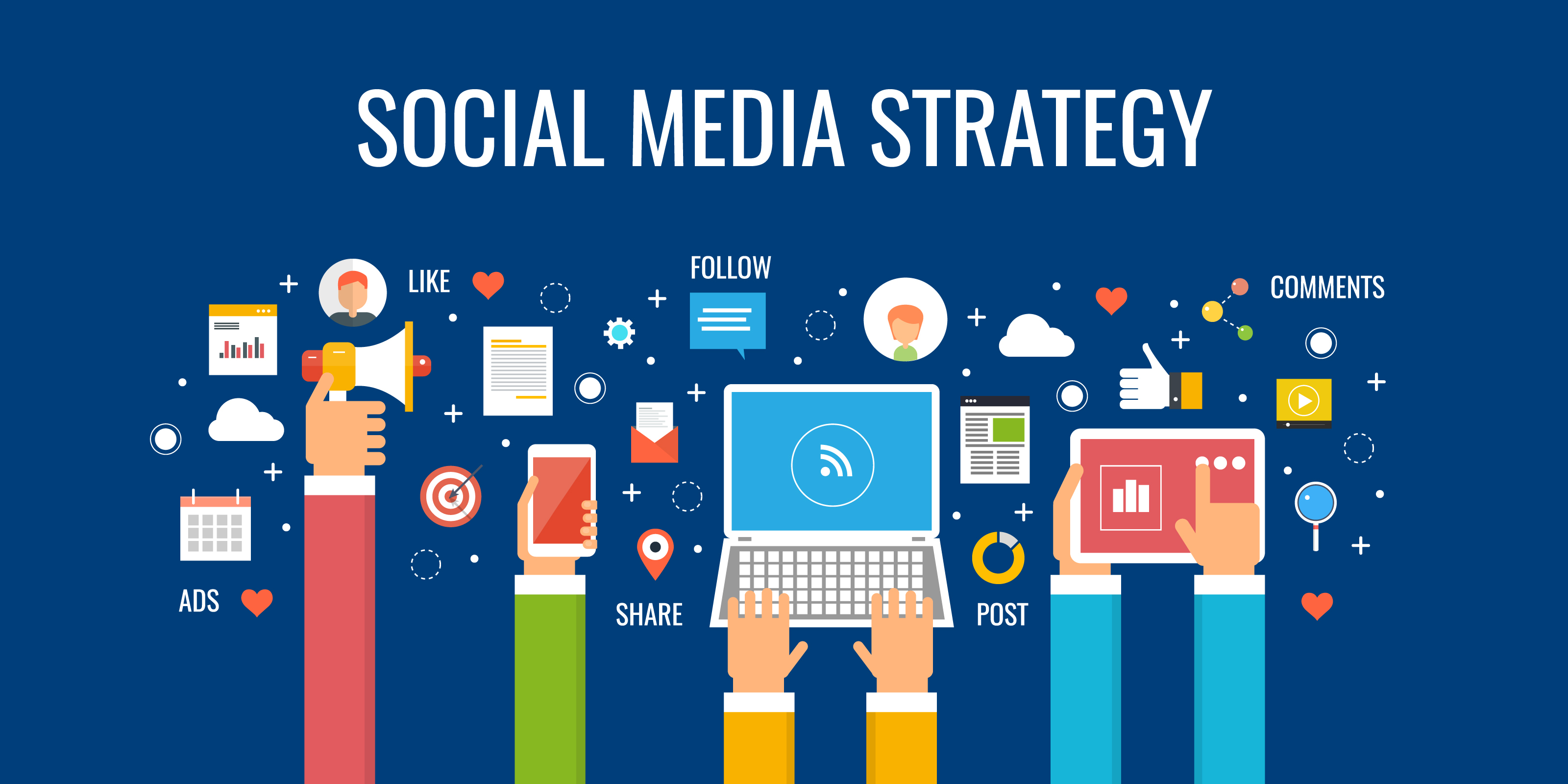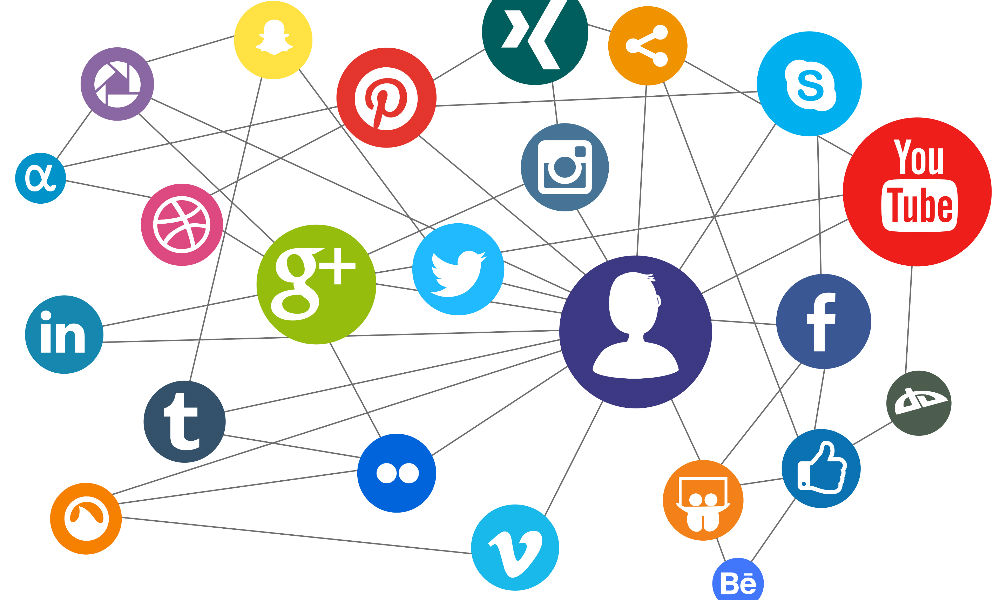Why You Should Consider Options Beyond Facebook
As the social media landscape continues to evolve, users are becoming increasingly aware of the importance of exploring alternative platforms beyond Facebook. With concerns about data privacy, algorithm changes, and the desire for a more specialized online community, many individuals are seeking out new ways to connect, share, and engage with others online.
One of the primary reasons to consider other social media apps besides Facebook is the issue of data privacy. With the rise of data breaches and concerns about how personal information is being used, many users are looking for platforms that prioritize security and transparency. Alternative social media platforms, such as Mastodon and Diaspora, offer a more decentralized approach to social networking, giving users greater control over their data and online presence.
In addition to data privacy concerns, algorithm changes on Facebook have also led to a decline in user engagement and satisfaction. The platform’s emphasis on paid advertising and promoted content has resulted in a less personalized and more commercialized user experience. In contrast, alternative social media platforms, such as Twitter and Instagram, offer a more organic and community-driven approach to social networking, allowing users to connect with others who share similar interests and passions.
Another reason to explore other social media apps besides Facebook is the desire for a more specialized online community. With the rise of niche social media platforms, such as LinkedIn for professionals and Goodreads for book lovers, users can connect with others who share similar interests and engage in more meaningful and relevant conversations. These platforms offer a more targeted and focused approach to social networking, allowing users to build relationships and connections that are more aligned with their personal and professional goals.
By considering alternative social media platforms beyond Facebook, users can take control of their online presence, connect with others who share similar interests, and engage in more meaningful and relevant conversations. Whether you’re looking for a more secure and transparent approach to social networking, a more community-driven and organic user experience, or a more specialized and targeted online community, there are many other social media apps besides Facebook that can help you achieve your goals.
Visual-Centric Platforms: A Closer Look at Instagram and TikTok
When it comes to visual-centric social media platforms, Instagram and TikTok are two of the most popular options besides Facebook. With over 1 billion active users, Instagram is a powerhouse for visual storytelling, offering a range of features such as Stories, Reels, and IGTV. TikTok, on the other hand, has taken the world by storm with its short-form video content, boasting over 655 million active users.
Both Instagram and TikTok offer unique features that set them apart from other social media platforms. Instagram’s focus on visual aesthetics and curated content makes it an ideal platform for businesses and individuals looking to showcase their products, services, or personalities. TikTok, with its short-form video content and creative editing tools, has become a go-to platform for entertainment, education, and community building.
In terms of user demographics, Instagram’s user base skews slightly older, with 71% of online adults aged 18-29 using the platform. TikTok, on the other hand, has a younger user base, with 50% of online teens aged 13-17 using the platform. This makes Instagram a great option for businesses looking to target a slightly older audience, while TikTok is ideal for those looking to reach a younger demographic.
When it comes to content style, Instagram is all about visual aesthetics, with users showcasing their personalities, products, and services through high-quality photos and videos. TikTok, on the other hand, is all about creativity and entertainment, with users creating short-form videos that are often humorous, educational, or inspiring.
For personal use, Instagram and TikTok offer a range of features that make them ideal for staying connected with friends and family. Instagram’s Stories and Reels features allow users to share behind-the-scenes content, sneak peeks, and exclusive deals, while TikTok’s Duets feature allows users to create videos with friends and family.
For professional use, Instagram and TikTok offer a range of features that make them ideal for businesses and entrepreneurs. Instagram’s Shopping feature allows businesses to tag products directly in their posts and stories, while TikTok’s Ads feature allows businesses to reach a wider audience through targeted advertising.
Overall, Instagram and TikTok are two powerful visual-centric social media platforms that offer a range of features and benefits for personal and professional use. Whether you’re looking to showcase your products, services, or personality, or simply stay connected with friends and family, these platforms are definitely worth considering as alternatives to Facebook.
Professional Networking: How LinkedIn and Xing Can Help You Connect
When it comes to professional networking, LinkedIn and Xing are two of the most popular alternative social media platforms besides Facebook. With over 700 million users, LinkedIn is the largest professional networking platform in the world, offering a range of features and tools to help users connect with others in their industry.
Xing, on the other hand, is a professional networking platform that is popular in Europe, with over 16 million users. It offers a range of features and tools to help users connect with others in their industry, including job searching, industry news, and thought leadership opportunities.
Both LinkedIn and Xing offer a range of benefits for professional networking, including the ability to connect with others in your industry, share your work experience and skills, and stay up-to-date with the latest industry news and trends. They also offer a range of tools and features to help users optimize their profiles and engage with others on the platform.
One of the key benefits of using LinkedIn and Xing for professional networking is the ability to connect with others in your industry. Both platforms offer a range of features and tools to help users find and connect with others, including search functions, groups, and messaging systems.
Another key benefit of using LinkedIn and Xing is the ability to share your work experience and skills. Both platforms offer a range of features and tools to help users showcase their work experience and skills, including resume building tools, skill endorsements, and recommendations.
In addition to these benefits, LinkedIn and Xing also offer a range of thought leadership opportunities, including the ability to publish articles and posts, participate in groups, and engage with others on the platform.
To get the most out of LinkedIn and Xing, it’s essential to optimize your profile and engage with others on the platform. This includes completing your profile, including a professional headshot and bio, and engaging with others through comments, likes, and shares.
It’s also essential to use the platform’s features and tools to connect with others in your industry. This includes using the search function to find others in your industry, joining groups related to your industry, and participating in discussions and conversations.
Overall, LinkedIn and Xing are two powerful professional networking platforms that can help you connect with others in your industry. By optimizing your profile, engaging with others, and using the platform’s features and tools, you can get the most out of these platforms and achieve your professional goals.
Microblogging and Community Building: The Rise of Twitter and Mastodon
Microblogging has become a popular way for users to share short-form updates, news, and thoughts with others online. Two platforms that have risen to prominence in this space are Twitter and Mastodon. While both platforms offer microblogging capabilities, they have distinct features and use cases that set them apart from other social media platforms.
Twitter is one of the most well-known microblogging platforms, with over 330 million active users. It allows users to share short-form updates, known as “tweets,” which can include text, images, videos, and other media. Twitter is known for its real-time discussions, news sharing, and community building features, making it a popular platform for users to connect with others who share similar interests.
Mastodon, on the other hand, is a decentralized microblogging platform that allows users to host their own servers and connect with others across the network. It has gained popularity in recent years due to its community-driven approach and emphasis on user control and data ownership. Mastodon allows users to share short-form updates, known as “toots,” which can include text, images, and other media.
One of the key benefits of using Twitter and Mastodon for microblogging is the ability to connect with others in real-time. Both platforms offer features such as hashtags, mentions, and replies, which allow users to engage with others who share similar interests. Twitter’s character limit of 280 characters per tweet also encourages users to be concise and creative in their updates.
Mastodon’s decentralized approach also offers several benefits, including greater control over user data and a more community-driven approach to moderation. Mastodon’s servers are hosted by users themselves, which means that users have more control over their data and can choose to host their own servers if they wish.
In addition to microblogging, both Twitter and Mastodon offer community building features that allow users to connect with others who share similar interests. Twitter’s groups feature allows users to connect with others who share similar interests, while Mastodon’s community-driven approach encourages users to engage with others across the network.
When it comes to using Twitter and Mastodon for personal or professional purposes, there are several tips to keep in mind. For personal use, it’s essential to be authentic and engaging in your updates, and to use hashtags and mentions to connect with others who share similar interests. For professional use, it’s essential to be concise and creative in your updates, and to use Twitter’s and Mastodon’s features to connect with others in your industry.
Overall, Twitter and Mastodon are two powerful microblogging platforms that offer a range of features and benefits for users. By understanding the unique features and use cases of each platform, users can get the most out of their microblogging experience and connect with others who share similar interests.
How to Choose the Right Alternative Social Media Platform for Your Needs
With so many alternative social media platforms available, it can be overwhelming to choose the right one for your needs. Whether you’re looking to connect with others, share your content, or build your personal or professional brand, there are several factors to consider when selecting an alternative social media platform.
First and foremost, it’s essential to define your goals and objectives. What do you want to achieve on the platform? Are you looking to connect with others, share your content, or build your personal or professional brand? Once you have a clear understanding of your goals, you can begin to evaluate the different platforms and their features.
One of the most critical factors to consider is your target audience. Who are the people you want to connect with on the platform? Are they professionals, hobbyists, or enthusiasts? Different platforms have different user demographics, so it’s essential to choose a platform that aligns with your target audience.
Another factor to consider is the content style of the platform. Are you looking to share short-form updates, long-form content, or visual content? Different platforms have different content styles, so it’s essential to choose a platform that aligns with your content style.
Features are also an essential factor to consider when choosing an alternative social media platform. What features do you need to achieve your goals? Do you need features like messaging, groups, or live streaming? Different platforms have different features, so it’s essential to choose a platform that offers the features you need.
Finally, it’s essential to consider the security and privacy of the platform. How does the platform protect user data? What encryption methods does it use? What user control features does it offer? These are all critical questions to ask when evaluating an alternative social media platform.
By considering these factors, you can choose the right alternative social media platform for your needs. Whether you’re looking to connect with others, share your content, or build your personal or professional brand, there are many alternative social media platforms available that can help you achieve your goals.
Here’s a step-by-step guide to help you choose the right alternative social media platform:
1. Define your goals and objectives.
2. Evaluate the target audience of the platform.
3. Consider the content style of the platform.
4. Evaluate the features of the platform.
5. Consider the security and privacy of the platform.
By following these steps, you can choose the right alternative social media platform for your needs and achieve your goals.
Security and Privacy: What to Look for in Alternative Social Media Platforms
When it comes to choosing an alternative social media platform, security and privacy are two of the most important factors to consider. With the rise of data breaches and concerns about online safety, it’s essential to evaluate a platform’s data protection policies, encryption methods, and user control features before signing up.
One of the key things to look for in an alternative social media platform is its data protection policies. What kind of data does the platform collect, and how is it used? Are there any opt-out options for data collection, and are users notified when their data is shared with third parties? A platform with transparent data protection policies is essential for maintaining user trust and ensuring online safety.
Encryption methods are also crucial for maintaining online safety. What kind of encryption does the platform use to protect user data, and are there any vulnerabilities in the encryption method? A platform with robust encryption methods can help protect user data from unauthorized access and ensure online safety.
User control features are also essential for maintaining online safety. What kind of control do users have over their data, and can they opt-out of data collection or sharing? A platform with robust user control features can help users maintain control over their online presence and ensure online safety.
Another important factor to consider is the platform’s approach to moderation. How does the platform moderate user-generated content, and are there any community guidelines in place? A platform with a clear approach to moderation can help maintain a safe and respectful online community.
Finally, it’s essential to evaluate the platform’s reputation and track record when it comes to security and privacy. Have there been any data breaches or security incidents in the past, and how has the platform responded to these incidents? A platform with a strong reputation and track record for security and privacy is essential for maintaining user trust and ensuring online safety.
By considering these factors, users can make informed decisions about which alternative social media platforms to use and ensure online safety. Whether you’re looking for a platform for personal or professional use, security and privacy should always be top of mind.
Here are some tips for evaluating the security and privacy of an alternative social media platform:
1. Review the platform’s data protection policies and encryption methods.
2. Evaluate the platform’s approach to moderation and community guidelines.
3. Research the platform’s reputation and track record for security and privacy.
4. Look for user control features and opt-out options for data collection.
5. Consider the platform’s transparency and communication about security and privacy incidents.
Monetization and Advertising: How Alternative Social Media Platforms Compare
When it comes to monetization and advertising, alternative social media platforms offer a range of options for businesses and individuals looking to reach their target audience. From sponsored content to affiliate marketing, each platform has its own unique approach to monetization and advertising.
Instagram, for example, offers a range of advertising options, including sponsored posts, stories, and reels. Businesses can also use Instagram’s shopping feature to tag products directly in their posts and stories, making it easy for customers to purchase from their feed.
TikTok, on the other hand, offers a more limited range of advertising options, but its short-form video format makes it an attractive platform for businesses looking to reach a younger audience. TikTok’s advertising options include sponsored videos, branded effects, and hashtag challenges.
LinkedIn, as a professional networking platform, offers a range of advertising options that are tailored to businesses and individuals looking to reach a professional audience. LinkedIn’s advertising options include sponsored content, sponsored InMail, and display ads.
Twitter, with its real-time discussions and news sharing, offers a range of advertising options that are tailored to businesses and individuals looking to reach a large and engaged audience. Twitter’s advertising options include sponsored tweets, sponsored accounts, and Twitter polls.
Mastodon, as a decentralized social media platform, offers a more limited range of advertising options, but its community-driven approach makes it an attractive platform for businesses looking to reach a niche audience. Mastodon’s advertising options include sponsored posts and sponsored accounts.
When it comes to affiliate marketing, each platform has its own unique approach. Instagram, for example, allows businesses to partner with influencers and affiliates to promote their products or services. TikTok, on the other hand, has a more limited range of affiliate marketing options, but its short-form video format makes it an attractive platform for businesses looking to reach a younger audience.
LinkedIn, as a professional networking platform, offers a range of affiliate marketing options that are tailored to businesses and individuals looking to reach a professional audience. LinkedIn’s affiliate marketing options include sponsored content and sponsored InMail.
Twitter, with its real-time discussions and news sharing, offers a range of affiliate marketing options that are tailored to businesses and individuals looking to reach a large and engaged audience. Twitter’s affiliate marketing options include sponsored tweets and Twitter polls.
Overall, each alternative social media platform has its own unique approach to monetization and advertising. By understanding the strengths and weaknesses of each platform, businesses and individuals can make informed decisions about which platforms to use and how to use them effectively.
Conclusion: Embracing the Diversity of Alternative Social Media Platforms
In conclusion, exploring alternative social media platforms beyond Facebook can be a great way to expand your online presence, connect with new audiences, and achieve your personal or professional goals. Whether you’re looking for a more specialized online community, a platform with unique features, or a way to monetize your content, there are many alternative social media platforms to choose from.
By considering the factors discussed in this article, such as target audience, content style, and features, you can make informed decisions about which platforms to use and how to use them effectively. Additionally, by understanding the importance of security and privacy, you can ensure that your online presence is protected and respected.
Ultimately, the key to success on alternative social media platforms is to be open-minded, flexible, and willing to experiment. Don’t be afraid to try new platforms, test different content styles, and engage with new audiences. By embracing the diversity of alternative social media platforms, you can unlock new opportunities, build meaningful connections, and achieve your goals.
So, what are you waiting for? Start exploring alternative social media platforms today and discover the many benefits they have to offer. Whether you’re a business, individual, or organization, there’s an alternative social media platform out there that’s right for you.
Remember, the world of social media is constantly evolving, and new platforms are emerging all the time. By staying informed, being adaptable, and embracing the diversity of alternative social media platforms, you can stay ahead of the curve and achieve your goals in the ever-changing world of social media.








